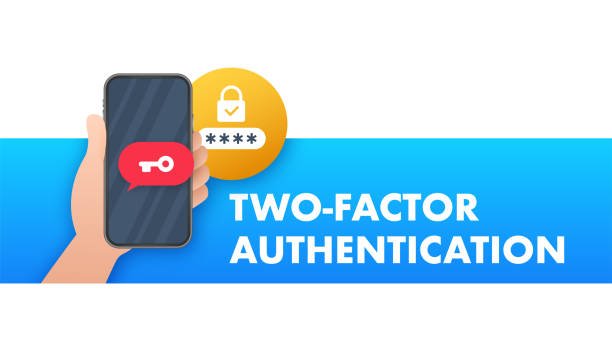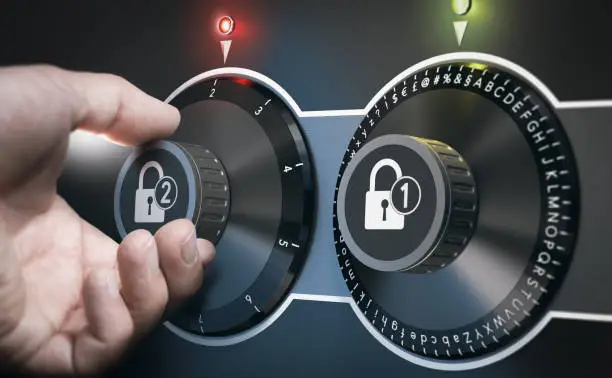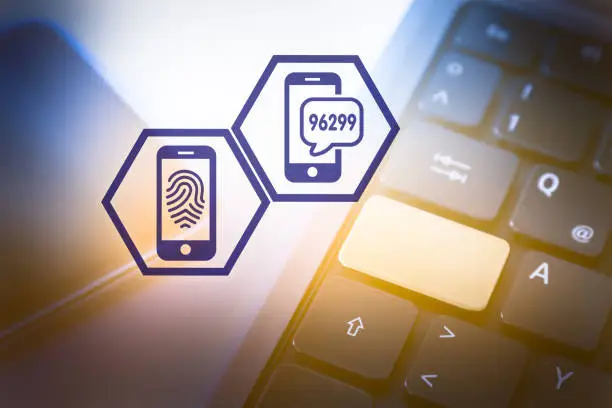-Safeguards-Your-Cyber-Kingdom.png)
Hackers Beware: How Two-Factor Authentication (2FA) Safeguards Your Cyber Kingdom
In today's digital age, safeguarding our online identities is crucial due to the rising cyberattacks. Two-Factor Authentication (2FA) emerges as the essential protector for our virtual presence.
As our digital world expands, our vulnerability to cyber threats increases. Technological advancements have made life convenient but also exposed gaps for cybercriminals. 2FA becomes a potent solution.
Unlike relying solely on passwords, 2FA adds an extra security layer. It combines something known (a password) with something owned (like a smartphone), forming a robust defense.
2FA isn't just technically effective; it's user-friendly too. It ensures security without complexity, promoting online safety.
In upcoming sections, we explore 2FA's mechanics, including SMS codes and biometric verification. We address evolving cyber threats and how 2FA proactively counters them.
In conclusion, securing our online identity is paramount. 2FA isn't a choice but a necessity, providing added protection against cyber adversaries.
Join us to delve into 2FA's nuances and its role in modern digital security.
What is Two-Factor Authentication (2FA)?

Two-Factor Authentication (2FA) is a vital security tool that enhances digital safety. Unlike relying solely on a password, 2FA adds an extra defense layer, reinforcing security for your online accounts.
2FA's core principle is dual verification. This strategy demands two distinct proofs for validation, making the entry process more rigorous.
Before granting access to your online accounts, 2FA requires presenting two separate evidences, making it much harder for unauthorized individuals to breach.
Imagine 2FA as a guardian at your digital doorstep. It mandates fulfilling two criteria for access: knowing a password and providing another verifiable detail.
This multi-step approach forms a complex shield, where potential intruders must surpass two authentication layers. This intricate process greatly boosts confidence that only authorized users gain entry.
In today's era of advanced cyber threats, 2FA's extra layer of protection is crucial. By fortifying the traditional password with added authentication, 2FA constructs a formidable obstacle against unauthorized entry, enhancing security for your online interactions.
The Importance of 2FA for Online Security

Amid the evolving online security landscape, Two-Factor Authentication (2FA) stands out. Hackers' advancements have made password-only protection outdated. In response, 2FA emerges as a potent defense against growing cyber threats.
Cybercriminal methods have shifted, demanding stronger security. Hackers, armed with advanced tools, breach passwords with ease, accessing sensitive accounts. In this context, 2FA transforms the game.
2FA's strength lies in its varied verification approach. Even if a hacker cracks your password, the second authentication layer poses an insurmountable challenge. This factor, like a smartphone code or biometric scan, acts as an unbeatable barrier.
2FA bolsters your digital safety by demanding both knowledge (password) and possession (second factor). This dual hurdle disrupts hackers, rendering their efforts useless. Even if they know your password, the absent second factor remains a robust gatekeeper, securing your data.
In today's threat-filled digital landscape, 2FA's importance can't be overstated. It proactively combats cyberattacks, adding a layer that significantly reduces unauthorized access risks.
Embracing 2FA assures individuals and organizations that their online assets are safeguarded against determined hackers, thwarting their endeavors effectively.
How to Implement 2FA: Step-by-Step Guide
Step 1: Choose Your 2FA Method
Select from various 2FA methods: SMS codes, email verification, or authentication apps. Opt for authentication apps like Authy or Google Authenticator for heightened security.
Step 2: Enable 2FA on Your Accounts
Navigate to your account settings, locate the security options, and enable 2FA. Follow the prompts to link your chosen method.
Step 3: Use Authentication Apps
Authentication apps generate time-sensitive codes, adding an extra layer of complexity that SMS lacks. Install your chosen app, scan the QR code, and you're set.
Step 4: Backup and Recovery Options
In case of a lost device, set up backup options. Keep a hard copy of recovery codes in a secure place. This ensures you're not locked out of your accounts.
Two-Factor Authentication (2FA) Best Practices

Adhering to Two-Factor Authentication (2FA) best practices is paramount for bolstering your online security. By implementing the following guidelines, you can ensure a robust defense against potential cyber threats:
#1. Regularly Update Passwords and 2FA Methods: The foundation of strong security begins with frequently refreshing your passwords and 2FA methods. Regular changes prevent unauthorized access by nullifying compromised credentials.
Additionally, updating your 2FA methods, such as opting for more advanced options like biometrics or hardware tokens, keeps your authentication process resilient and up-to-date.
#2. Avoid Using the Same 2FA Method Across Multiple Accounts: While convenience might tempt you to use a single 2FA method for multiple accounts, this practice is risky.
Diversify your authentication methods to prevent a breach in one account from compromising others. This approach fortifies your overall security posture by introducing an extra layer of complexity for potential attackers.
#3. Stay Cautious of Phishing Attempts, Even with 2FA: While 2FA offers robust protection, it's not impervious to social engineering attacks like phishing. Cybercriminals might try to trick you into revealing your 2FA code or other credentials.
Always verify the authenticity of requests for your 2FA information, ensuring they come from legitimate sources. Remember, 2FA codes are meant to be kept confidential and should never be shared.
#4. Periodically Review Your 2FA Settings and Devices: As your digital landscape evolves, it's essential to periodically review and update your 2FA settings. This includes auditing the devices linked to your accounts and removing any that are no longer in use or compromised.
Regularly reviewing your settings ensures that you maintain control over your security measures and can promptly address any suspicious activities.
By adhering to these 2FA best practices, you're not only enhancing your own online security but also contributing to the broader digital defense against cyber threats.
A proactive and informed approach to 2FA ensures that your virtual presence remains well-guarded in an ever-changing digital world.
Conclusion
In a world teeming with cyber threats, Two-Factor Authentication emerges as the superhero safeguarding your online identity.
By following our simple guide, you can seamlessly implement 2FA and fortify your digital defenses against malicious actors. Don't wait; the time to armor up is now.